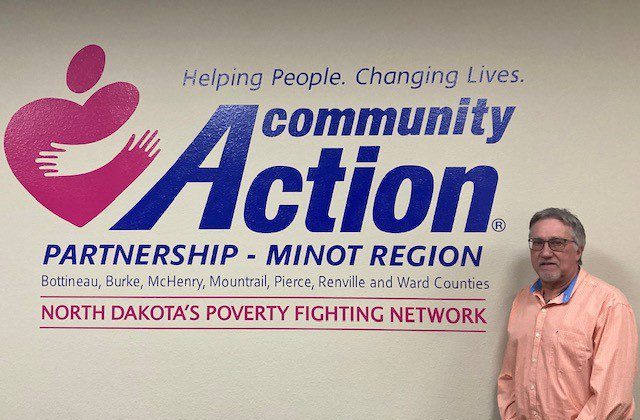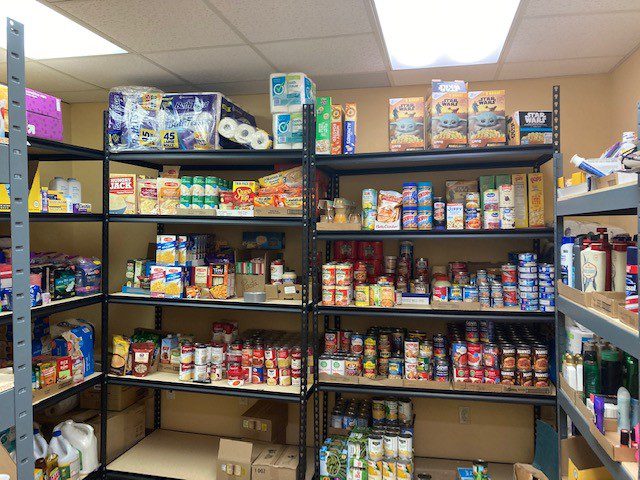

MINOT — Community Action Partnership has served the Minot region for many years, doing its best to help with the many problems that come to low-income families.
Missy Barnett, the program manager, shared, “Our mission is to prevent poverty and help homelessness. We have a variety of services that we offer.”
Some of those services include housing, an emergency food pantry, and an Individual Development Account (IDA) program.
“[The IDA] is for college students or anybody who is wanting to buy a house or go for an education,” Barnett explained.
The charity also has a Supportive Services for Veteran Families program for homeless vets.
“We have a lot, like mid-20 open active cases with that. [It’s a] pretty popular program, there’s a lot of homeless vets, so we want to make sure they’re well taken care of,” said Barnett.
For the some of the housing programs, Barnett explained, “We have our housing services where we help, when we have funding, with rental assistance or security deposits.
Willy Soderholm, the director, described the housing programs in further detail, saying, “Right now we’re a sub-contractor with North Dakota Rent Help. It’s a program that started out to help people during COVID that lost their jobs or needed assistance that were affected by that. It’s through the Department of Human Services.”
Community Action also has a weatherization program, to reduce the cost of living, thus helping families save money for other areas in their life.
“That’s a one-time thing,” said Barnett. “People will be put on a list, it’s a long waiting list, but they try to do the best they can. If they can’t get in touch with the first person, then they’ll contact the next person. And they’ll go in and see if they need new windows, or if a home has gaps, you know, we try to make it more energy self-sufficient.”
“Let’s say [a client] wants us to come out weatherize their home and they’ll fill out an application. If they meet the income guidelines then we send out an estimator, and they go out and decide what needs to be done,” said Soderholm. “Once they do that, then they send the crew out. They might be spending three or four hundred dollars a month just on their fuel bill, so once we can go in and weatherize the home then we might be able to knock those bills down to let’s say 200 dollars.”
Barnett said that the emergency program is 30 day, one time a year emergency.
“It’s all based on funding that we get with donations,” said Barnett. “We have, you know, detergent, toilet paper, food, what they need. We get donated meat, like venison, goose, all that stuff. A lot of hunters are into that, it’s called our ‘Sportsmen Against Hunger Program.’”
“That is just to help people make ends meet,” Soderholm shared. “Everybody needs to have food on the table. Right now rents are high in our area. We’re seeing clients where 50, 60% of their monthly income goes to keeping a roof over their head. You shouldn’t have to be paying more than 30 to 33% of your income to go towards housing costs.”

Barnett described the program that she handles, called the Emergency Prescription Program, which is strictly for people who do not have insurance.
“If you have Medicare or Medicaid, we cannot help with it,” Barnett explained. “A lot of it’s for insulin, diabetics, and they need help getting that, because insulin is so expensive. We help with that or just blood pressure medicine or whatever they need. We offer the self-sufficiency too, where we just do a budget. Sometimes we get a lot of calls from people that are just like ‘ok I lost my job, I just need to get back on track,’ and then we will help them.
Barnett said it is usually about three budgets until the clients “feel comfortable. It’ll be through a three-period month, and then hopefully they feel financially stable. They’re always welcome to come back.”
“That’s our mission ultimately, is to get them to the point where they’re now self-sufficient, and they don’t have to depend on programs such as this,” said Soderholm.
Community Action also has an Energy Share Program, for people who are behind on their electric bill, though they must have a disconnection notice and must be on Low Income Home Energy Assistance Program (LIHEAP).
“We help people so their lights aren’t going to get shut off, or their heat. It’s just based on issue to issue, some cases are more severe than others,” said Barnett.
Barnett described their gas stamp program, “We have different businesses that have like a bucket and they will drop the gas stamps in there. Right now, with the price of gas it’s only a one-time deal. Now people are saving them for themselves, they don’t want to donate them.”
“We really help anybody, because our funding comes from the federal government. It’s a community service block grant that we receive, that kind of helps us out and keeps a roof over our head. And weatherization is through the Department of Energy,” Soderholm explained.
Though the federal government covers the rent help program, Soderholm says that when people come in need for rent help, there is often other needs that they have.
“We always need donations for food. We have a Christmas program, where we provide gifts at Christmas,” said Soderholm. “Just in general, with the donations we get, we can then provide, maybe dental services, or eyeglasses, or just things like that.”
Dental assistance is number two on the list of needs from a statewide survey, following housing. “With the federal dollars that we get, it’s for specific things, they have specific guidelines. Then when we say, ‘Well, if we had the money we could do this, this and this,’ that’s where the donations come in, because the federal dollars won’t cover those things.”
Soderholm says that monetary donations are nice, because they do not have any specific stipulations to them.
“Some of our housing money, it has to specifically tie into COVID. So you’d have to have had COVID, or have had your hours cut back because of COVID,” Sodereholm explained.
According to Soderholm, Community Action helps around 2500 to 3000 people every year, in more than seven counties.
Soderholm says homelessness is on the rise, “It’s definitely gotten worse. Once we had the flood and the oil boom, the housing stock diminished down to nothing, housing costs are sky high. Food is expensive. Daycare is outrageously expensive.”
More information on Community Action can be found on its website.